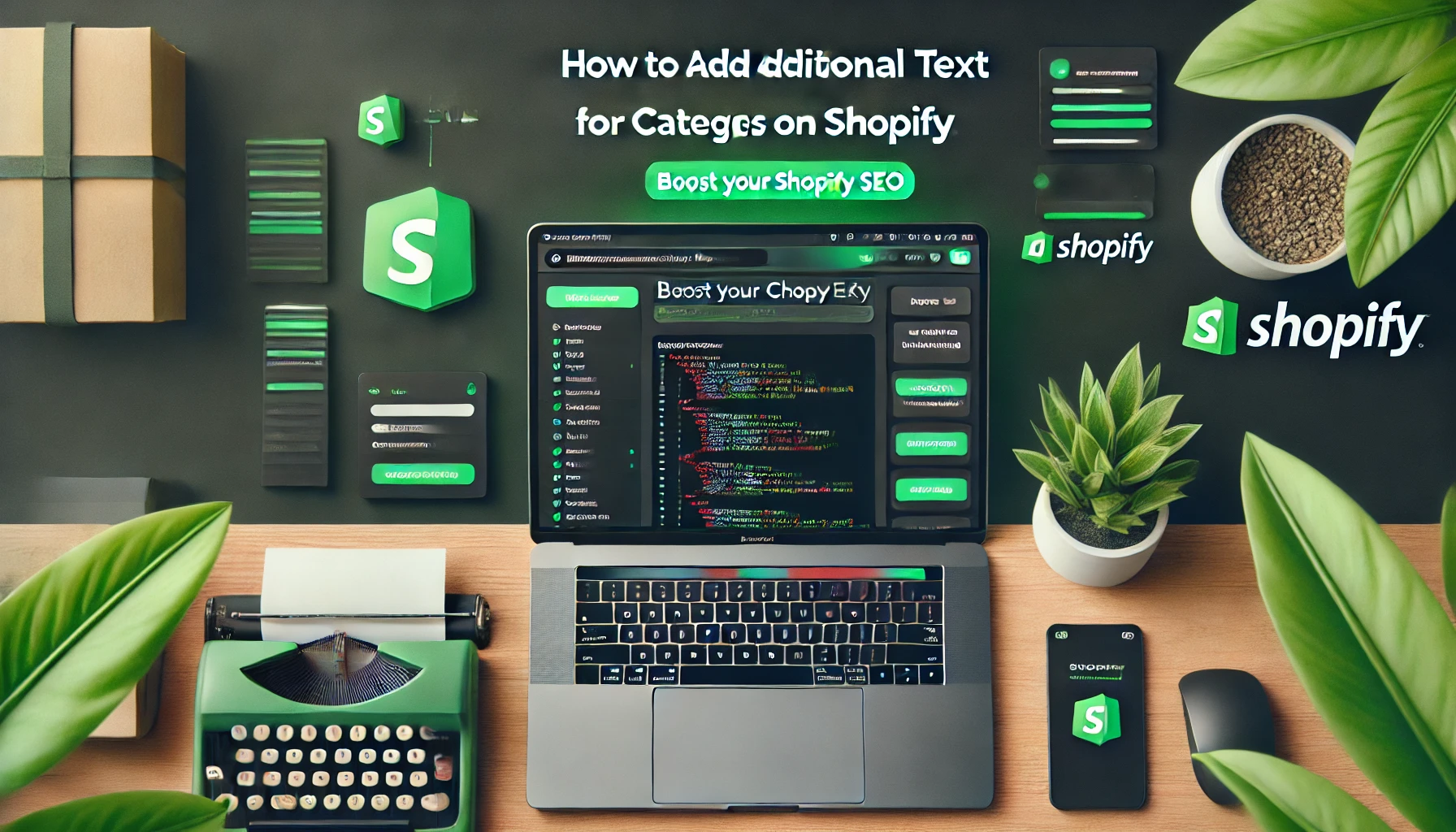
Enhancing your Shopify store’s collection pages with additional, unique text can significantly improve your site’s SEO and provide valuable information to your customers. Follow this comprehensive guide to add unique text to the bottom of your collection pages, making your store more engaging and search-engine friendly.
Why Add Unique Text to Collection Pages?
- SEO Benefits: Unique content can help improve your search engine rankings by providing search engines with more context about the products in your collection.
- Enhanced User Experience: Additional information can help customers make informed decisions, increasing their satisfaction and likelihood of purchase.
- Brand Authority: Well-written content can establish your brand as an authority in your niche.
Step-by-Step Guide to Adding SEO Content to the Bottom.
Method 1: Using the Shopify Admin
Step 1: Log in to Shopify Admin
Log in to your Shopify admin panel using your credentials.
Step 2: Navigate to Themes
From the Shopify admin dashboard, go to Online Store > Themes.
Step 3: Edit Code
Find your current theme and click on Actions > Edit code.
Step 4: Locate the Collection Template
In the code editor, look for the collection template file. This is typically named collection.liquid and can be found in the templates folder.
Step 5: Edit the Collection Template
Open the collection.liquid file and scroll to the bottom where you want to add your unique text.
Step 6: Add Your Custom Text
Insert your custom HTML code for the unique text. For example:
<div class="custom-collection-footer">
<p>Your unique text goes here. Include any relevant information that enhances the collection page.</p>
</div>
Step 7: Save Changes
Click Save to apply the changes to your collection template.
Method 2: Using a Custom Section
Step 1: Create a New Section
In the code editor, click on Add a new section. Name it collection-footer.
Step 2: Add HTML Content to the Section
In the newly created collection-footer.liquid file, add your HTML content. For example:
<div class="custom-collection-footer">
<p>Your unique text goes here. You can add detailed product information, brand stories, or promotional messages.</p>
</div>
Step 3: Include the Section in the Collection Template
Open the collection.liquid template file and include the new section at the bottom:
{% section 'collection-footer' %}
Step 4: Save Changes
Save both the section and the collection template files.
Method 3: Using Shopify’s Page Editor
Step 1: Navigate to Products > Collections
From the Shopify admin dashboard, go to Products > Collections.
Step 2: Select a Collection
Click on the collection where you want to add the unique text.
Step 3: Add Description
In the collection’s settings, add a description. This description will appear at the top of the collection page by default. If you want it at the bottom, you will need to adjust it using CSS.
Step 4: Custom CSS
Add custom CSS to move the description to the bottom. You can do this in the theme.scss.liquid file:
.collection-description {
position: relative;
bottom: -50px; /* Adjust this value as needed */
}
Step 5: Save Changes
Save your changes.
Tips for Creating SEO-Friendly Content
- Keyword Optimization: Include relevant keywords naturally within your text to help search engines understand the content of your page.
- Quality Content: Ensure your content is valuable, informative, and relevant to your audience.
- Readability: Use short paragraphs, bullet points, and subheadings to make your content easy to read.
- Internal Linking: Link to other relevant pages within your site to improve navigation and SEO.
Conclusion
Adding unique text to your Shopify collection pages is a simple yet effective way to boost SEO and enhance the customer experience. By following the steps outlined in this guide, you can easily implement this change and reap the benefits of improved search engine rankings and increased customer engagement.
If you need to create such SEO-friendly content or sample write-ups, please contact us.